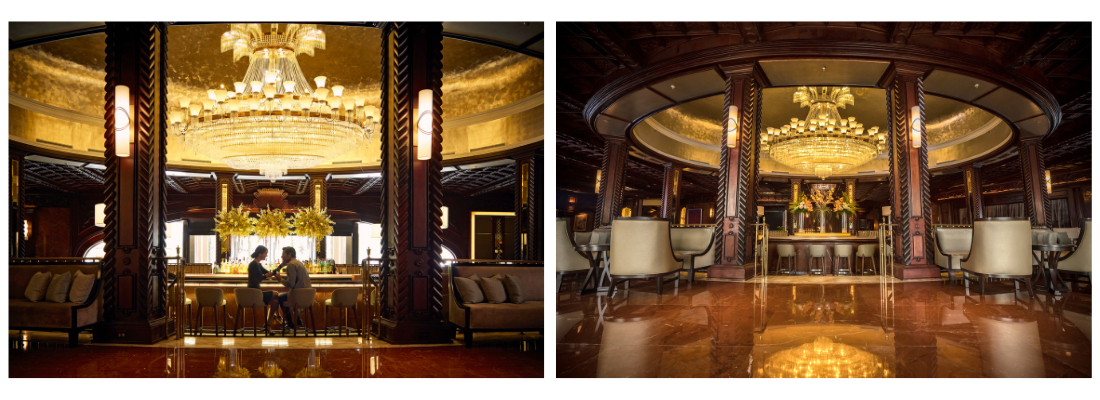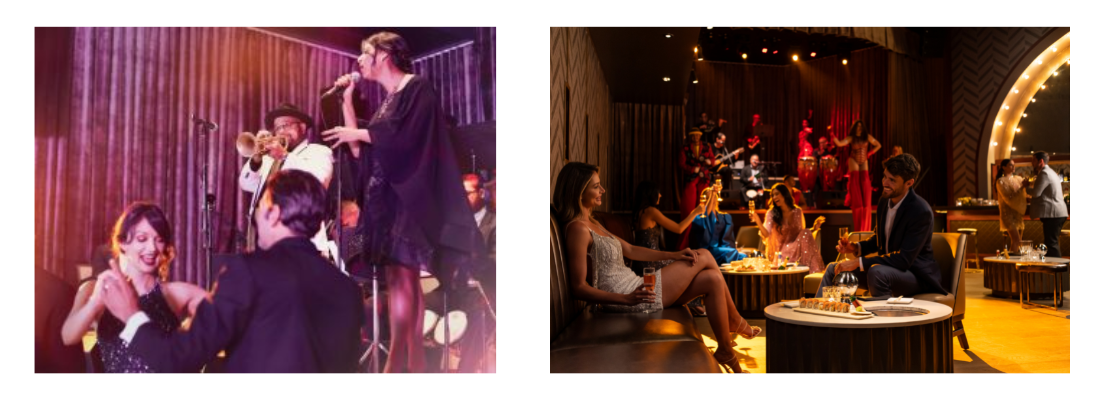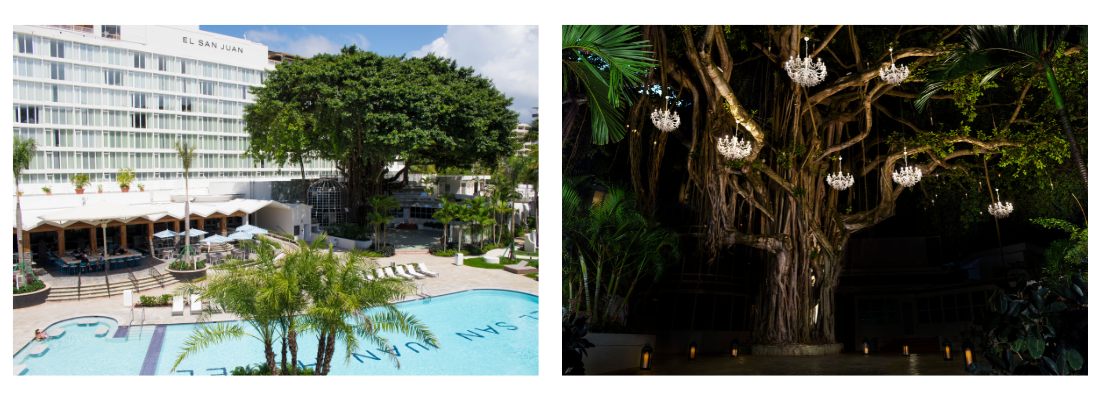Originally constructed by Pan American World Airways to house flight crews and the 1950s jet setters arriving at San Juan’s then-new international airport, Fairmont El San Juan Hotel debuted in Puerto Rico on February 1, 1958. But it wasn’t until a decade later that the beachfront property gained true worldwide fame, following an epic expansion and reconceptualization by architect Morris Lapidus and interior designer Alan Lanigan. This reimagination ushered in an era of elegance, entertainment, and exceptionalism, a time that truly immortalized Fairmont El San Juan Hotel.
Thankfully, renovations during future decades (including one in 2017 by noted design firm Jeffery Beers) sought to enhance rather than replace the property’s most iconic elements. Today, the splendor of the past remains palpable across the hotel—here is where.
Mid-Century Stunner: Inside & Out

Architect Morris Lapidus was the biggest name in the modern resort movement shaping Miami Beach in the 1950s, and the majority stockholder of the El San Juan Hotel, Louis Puro, had taken note. With projects such as the Fontainebleau Hotel, Lincoln Road, and Eden Roc Miami Beach Hotel under his belt, Lapidus was commissioned to transform the Fairmont El San Juan Hotel into a beacon of mid-century modern elegance through architectural design.
Meanwhile, interior designer Alan Lanigan sought to complement Lapidus’ ingenuity through an eclectic interior design “found nowhere else in the world,'' underscored by the creation of the lavish Palm Court Lobby. Lanigan personally traveled the world for his magnum opus, sourcing rose-colored Carrera marble from a quarry in Tuscany for the floors and walls, tapestries from rural France, and ornaments and artifacts from across Africa and Mexico. He imported cherry mahogany from Santo Domingo as the foundation for the lobby’s wooden arches and ceiling, and then hired 16 local artisans to hand-carve his artistic vision.
Centerpiece Chandelier

Wow-factor walls, arches, and ceilings notwithstanding, the Palm Court Lobby’s most striking feature was—and still is—an extraordinary hand-blown Czechoslovakian oval chandelier, the third largest in the world. The regal 7,000-piece, 185-bulb, 4,000-pound chandelier rivals those found in Milan's La Scala, Rome's Royal Opera, and the palace of Versailles. As one could imagine, maintaining the chandelier’s luster has been no easy task over the decades: a scheduled cleaning requires an entire team a full six weeks to complete.
Club Tropicoro

The tropics’ growing resort culture of the 1960s demanded high-profile entertainment, and in the wake of the Cuban Revolution, the renowned Tropicana Nightclub in Havana had shuttered. Enter Club Tropicoro at Fairmont El San Juan Hotel, a tropical-chic performance venue inspired by Puerto Rico’s El Yunque National Forest, clad in living vegetation and equipped with misters, that soon became the place for international headliners. In the late 1960s and early 1970s, some of the biggest names in music hit the stage at Club Tropicoro: Sammy Davis Jr., Nat King Cole, Frank Sinatra, Milton Berle, Eddie Fisher, The Supremes, Louis Armstrong, Johnny Mathis, and Liza Minelli, among others.
Under the Banyan Tree

It is estimated that the towering Banyan tree located between the hotel proper and the pool area is a whopping 300 years old—and it has both the height and girth to prove it. This natural marvel has been a main attraction since the hotel’s 1958 opening—a prized spot for photos, an idyllic location for romantic weddings, and an eco-cool setting for receptions. While we do not know much about the tree’s existence from before the opening of Fairmont El San Juan Hotel, we do know that it almost lost its life during Hurricane George in 1998. It was so bruised and battered by this Category 4 storm that a “tree surgeon” had to be flown in from Florida to save it. Fortunately, the Banyan Tree was brought back from the brink, and has since flourished once more as one of the hotel’s most iconic, historic entities.